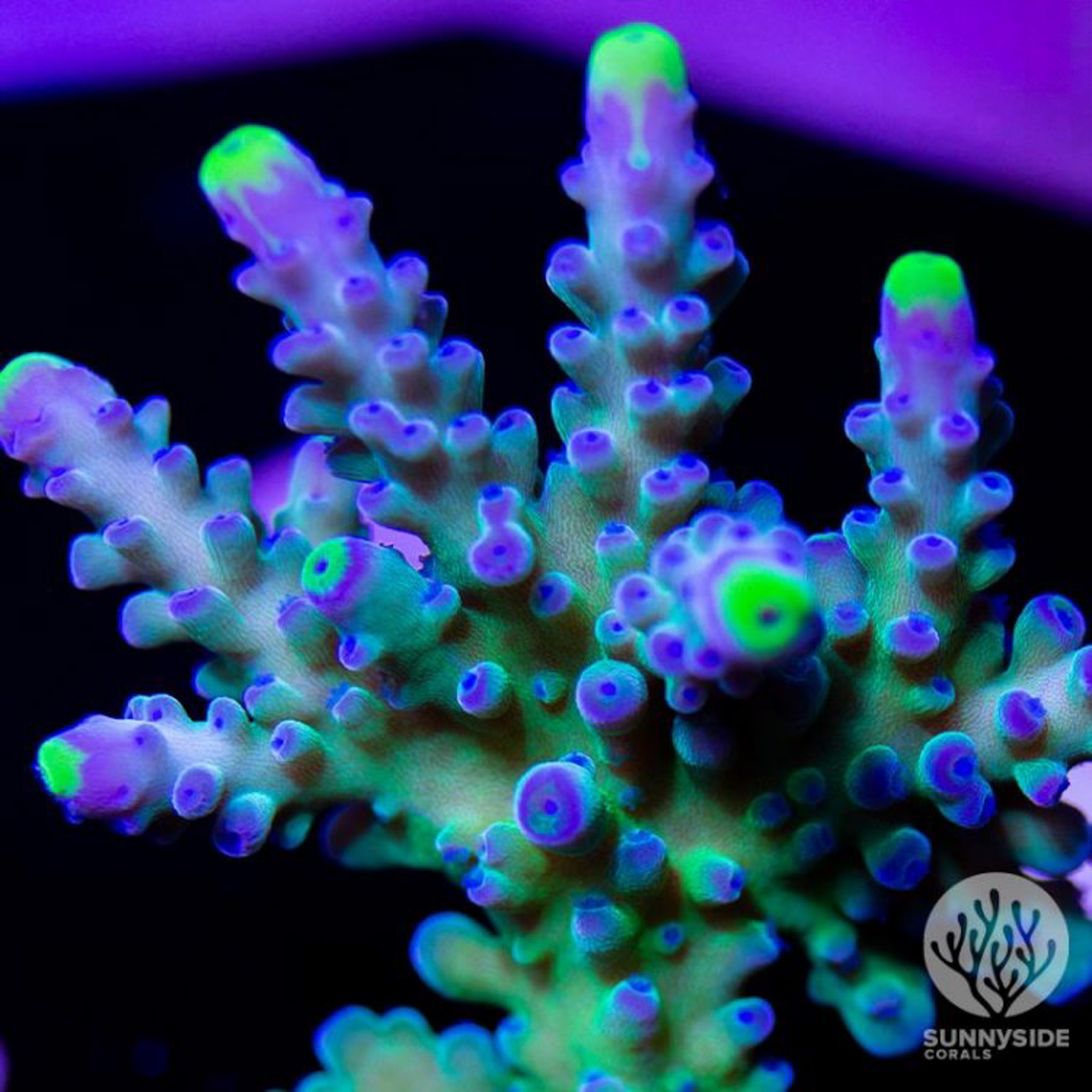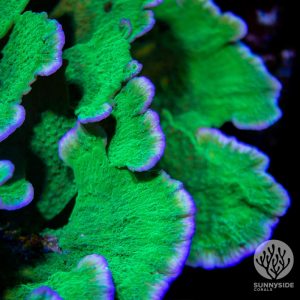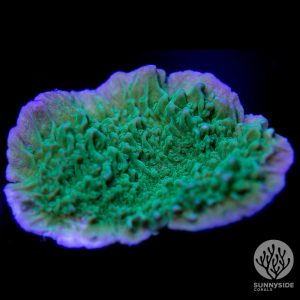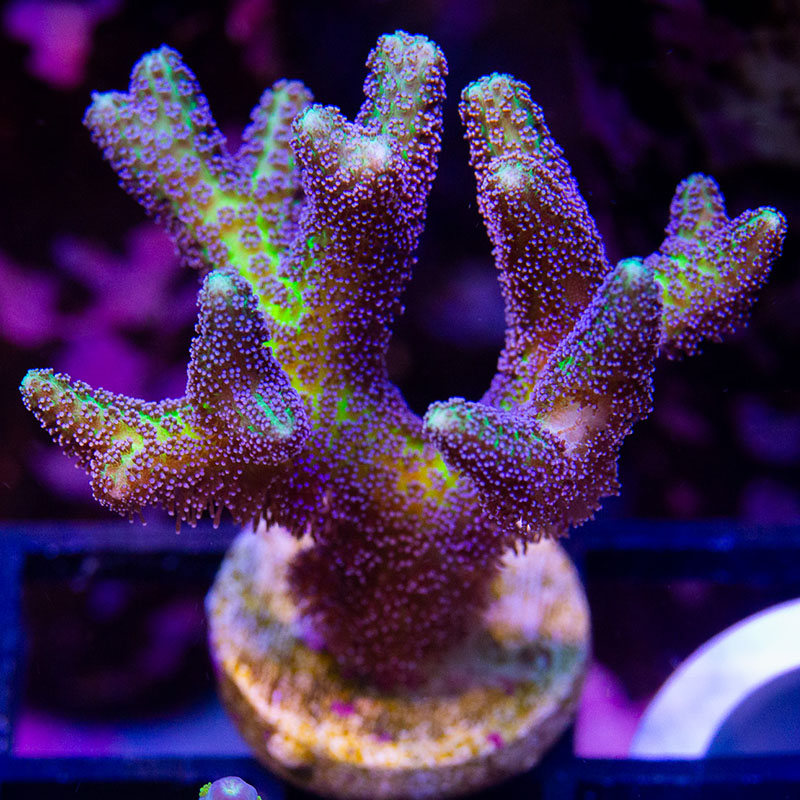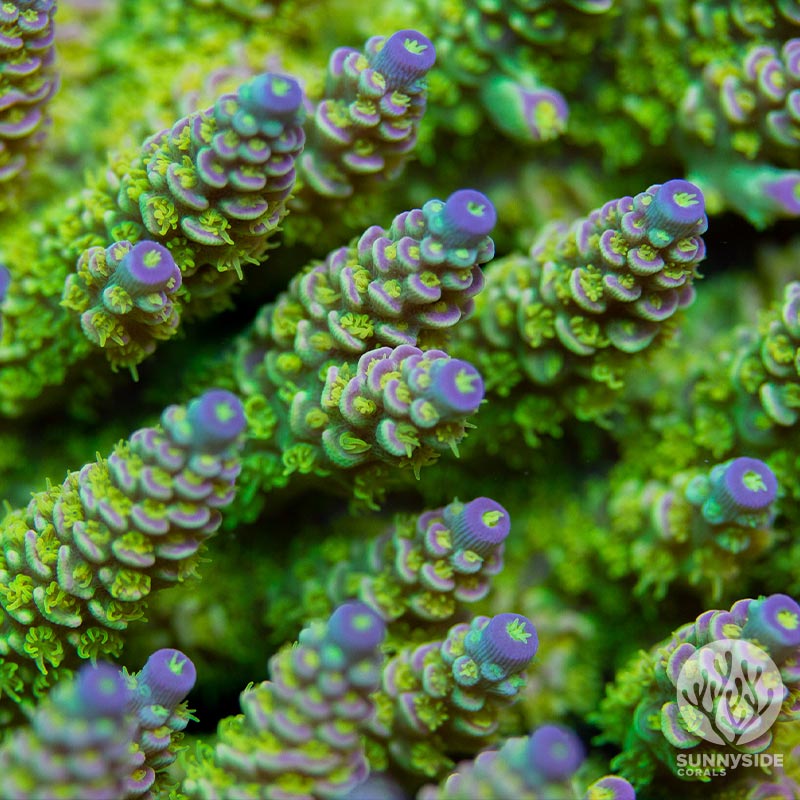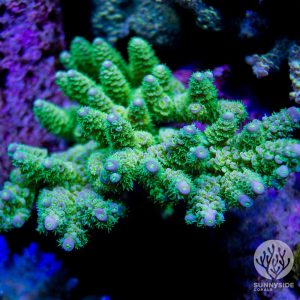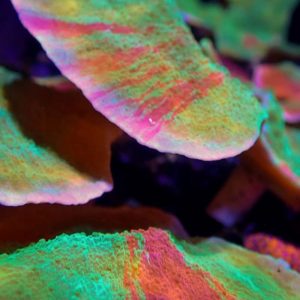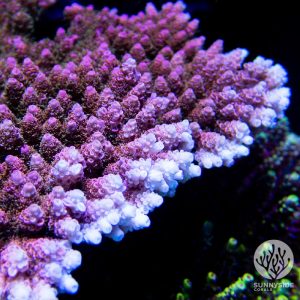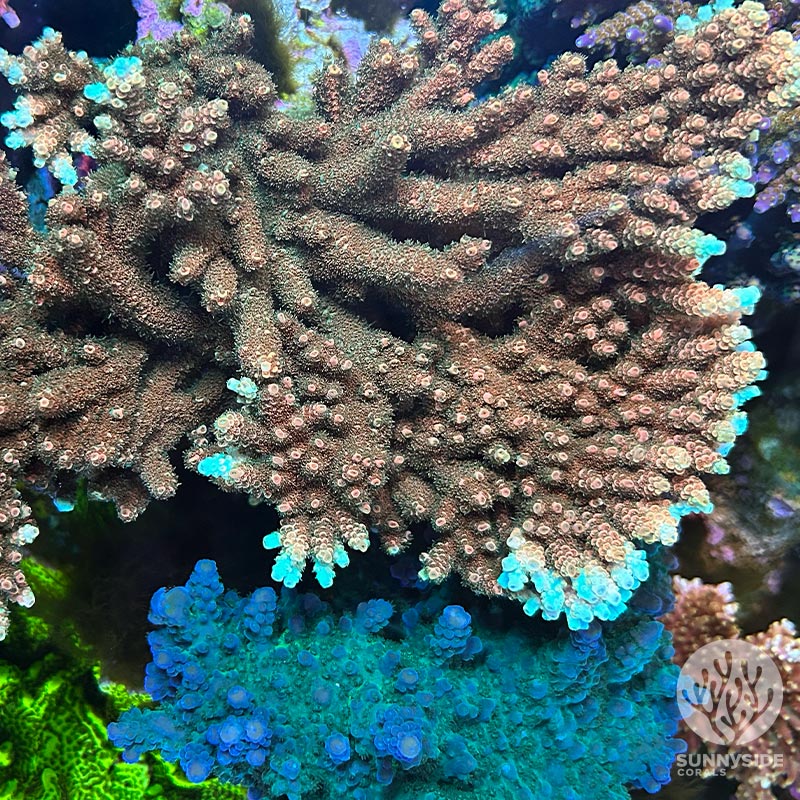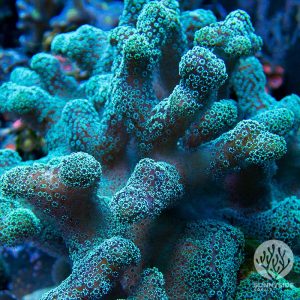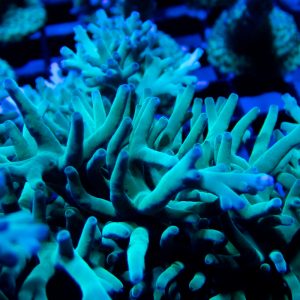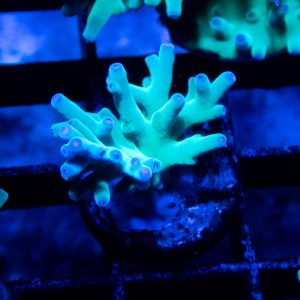Small Polyp Stony (SPS) corals come in many shapes, sizes and colors. With a wide variety available, SPS corals can vary from easy to challenging. However, with a stable tank and the right set of guidelines, SPS corals can be easily maintained. For those ready to start growing SPS corals, here is a guide to SPS corals and their care.
What are SPS Corals?
There are two main classifications of Hard Corals. One is the Small Polyp Stony Corals or often referred to as SPS Coral. The other classification of Hard Corals are Large Polyp Stony Corals, also known as LPS Corals. SPS corals are often identified by their smaller polyp size and hard calcified internal skeleton. This identification method does not always hold true for all SPS corals, however. When people think of reefs found in the ocean, they often picture SPS coral. SPS coral are often referred to as the architects of the ocean because of their intricate growth patterns and structure
How To Care For Your SPS Coral
How we manage our systems
SPS corals are more sensitive to water chemistry and are also very demanding in regard to lighting and flow. So much so that their coloration can change from tank to tank because of the slight differences in their systems. No need to worry though. You can find the right color with appropriate adjustments to your system and a little patience.
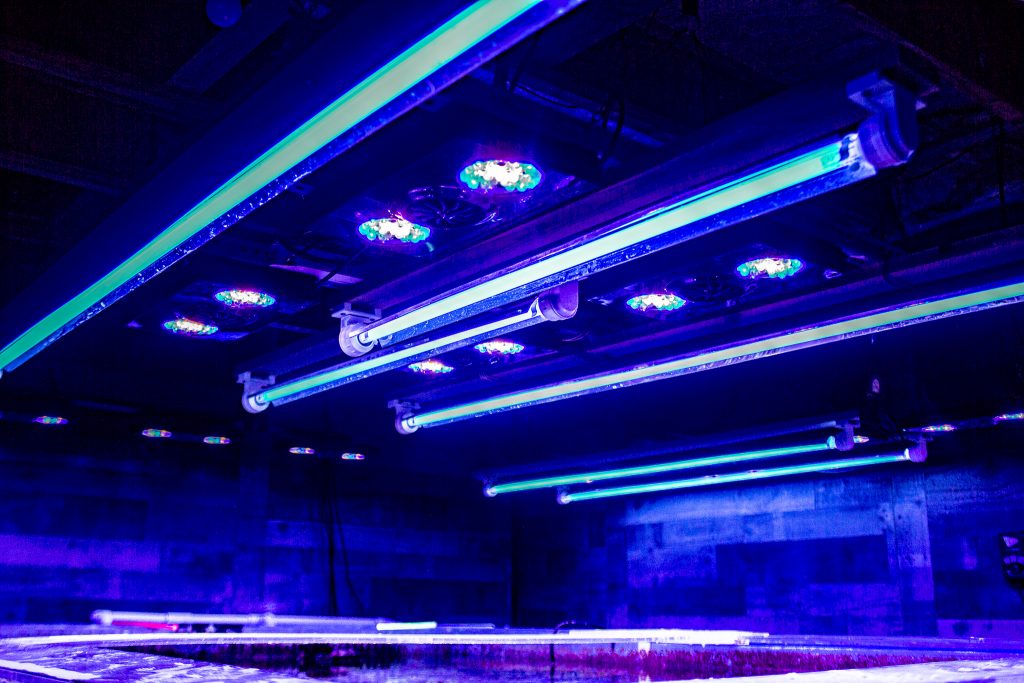
Lighting
SPS corals can vary on how much light they require. Acropora requires a high amount of light and often needs to sit close to the top of your tank. Montipora or Birds Nest coral require slightly less light. We run a slightly modified A/B schedule with gen 4 Radions and supplement T-5 lighting for all of our SPS corals. For more help on lighting, you can see our exact light set up and schedule on our tank lighting post.
Flow Requirements
Acropora requires a high amount of flow. As stated before they often do best up high in your tank where they can receive a high amount of flow as well as light. Montipora and other SPS corals do better with slightly less flow. Be sure to research the specific type of coral that you are interested in to know how to best place it.
Placement
When placing SPS coral keep in mind the amount of flow and lighting that the coral will receive. You can always move the coral after a short period of time if it does not seem to be doing well. There is no perfect placement with any coral and each tank will be slightly different.
Dosing
Dosing can make growing SPS coral a lot easier. A dosing system automatically adds small amounts of chemicals into the water to help maintain and replenish your tank parameters. By dosing small amounts of Alkalinity, Calcium, and Magnesium you can make sure your tank has steady levels that are optimal for growing SPS corals.
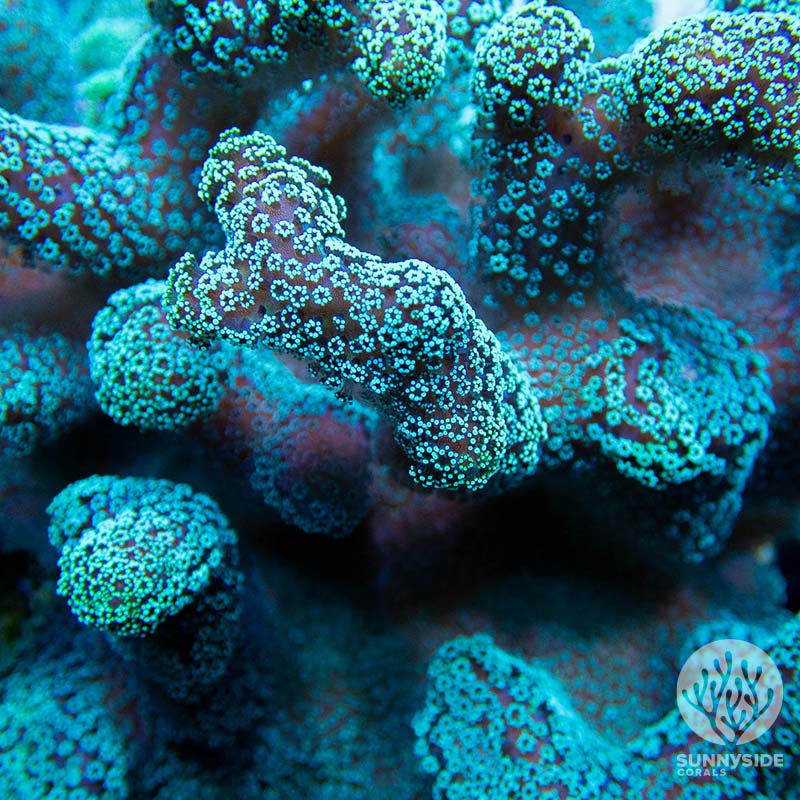
Feeding
SPS do not require target feeding as most of their nutrients come from lighting. However, that does not mean they do not require some type of feeding. SPS polyps are able to capture smaller, particulate-sized foods through broadcast feeding. Three sources of foods that work well for them are amino acids, small zooplankton, and having fish present. If your SPS are looking a little drab but your water chemistry and lighting looks good, there is a chance that your coral might just be hungry. At Sunnyside Corals we keep fish in all our systems and broadcast feed with a variety of foods. We use automated pellets to set our baseline and supplement that at random with a variety of frozen foods. Some of those include: LRS reef frenzy frozen food (pe calanus), Hikari (spirulina brine shrimp), and reefroids and benepets. We will also use nori and flake food occasionally. There is no set feeding schedule, but typically we will supplement with frozen once a week, then a few days later we might use powder and then a few days later do flakes/ nori. Occasionally we also dose with aminos. All of this is based on our current algae levels. If algae levels are high then you are overfeeding.
Water Parameters
Water parameters are always a key part of growing any coral. SPS corals can be surprisingly hardy corals however they do best in cleaner systems. This means that the Nitrates and phosphates generally need to be lower. The most important thing though, is that you keep your levels stable. Montipora can get stressed and lose all of their colors very quickly when tank parameters start to fluctuate but often come back once parameters stabilize. Look into
automation tools such as dosers, refugium, and calcium reactors to help stabilize your tank levels. We aim to keep very standard levels in our systems.
ALK: 9
CAL: 420
MAG: 1400
Salinity: 1.025
We also use automation tools to help keep these levels stable. Our two main systems utilize large, commercial grade calcium reactors. We run a KALK reactor to keep ph up on both systems and we run a zero mag in the calcium reactors to keep the magnesium stable.
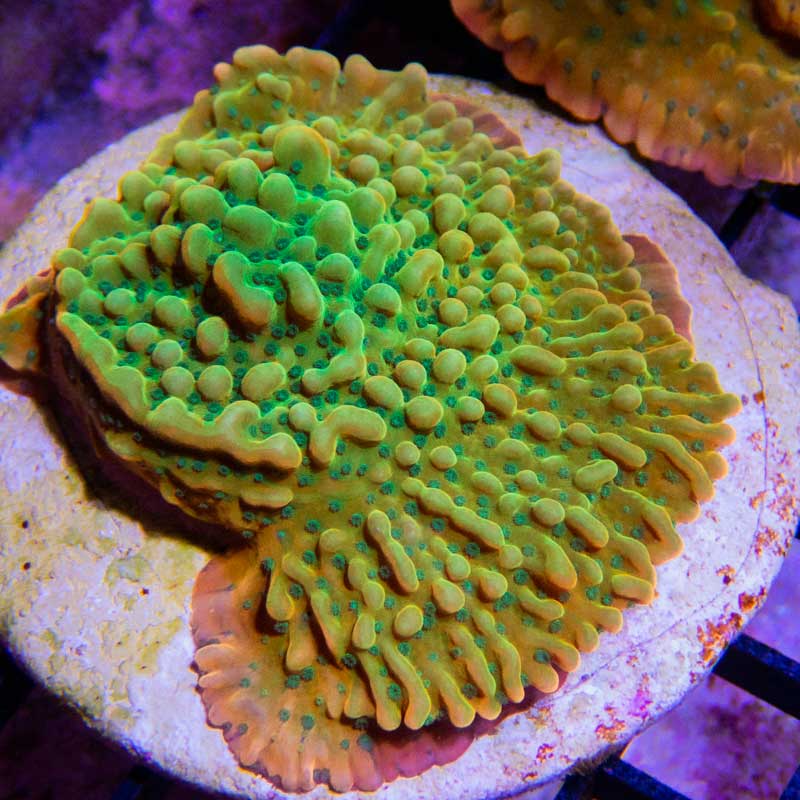
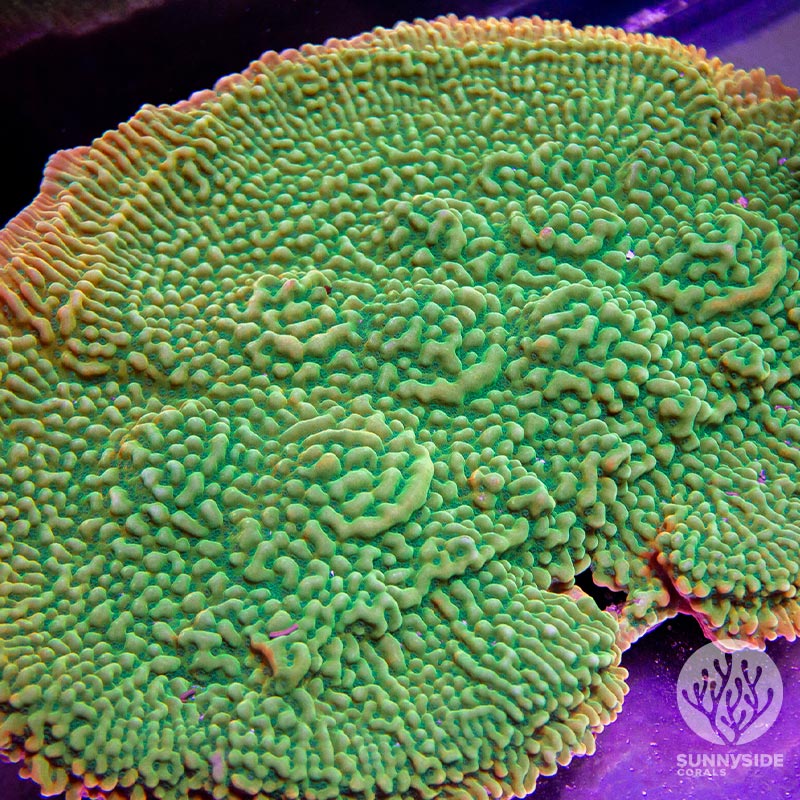
How to increase Growth
The key to increasing SPS coral growth in your tank is to make sure your tank is consistent. Once you find a spot in your tank where your corals are happy, don’t move them. If you keep your parameters consistent and have adequate light and flow, your SPS corals will start to thrive.
Pests and common problems
SPS coral is susceptible to various pests and diseases; such as Slow Tissue Necrosis (STN) and Rapid Tissue Necrosis (RTN). This is where the skin of the coral begins to peel off and die. Another pest to watch for is Montipora Eating Nudibranchs, which are small, white nudibranch. Because of this, Sunnyside Corals has had a multi-step dipping process in place for years. All of our new corals go through this process and then are added to a temporary quarantine tank before being placed in any of our other tanks.
Tankmates for Montipora
Montis can be kept with all reef-safe species. SPS can be easily picked at by fish like angelfish and butterfly fish, so it is best to go with those that are guaranteed to be safe. Some of those options include; damselfish, tangs, and wrasses. Another thing to consider is that montis can be irritated by wandering snails and crabs. While they should not cause too much damage to your coral, you may want to avoid hermit crabs and larger snails that can scrape the top of your Montipora.
Things to Know Before You Buy SPS:
SPS corals are highly susceptible to changes in water parameters. If your tank has a sudden dip or spike in parameters you may lose most of your SPS corals. For this reason, SPS corals require significantly more maintenance and monitoring than LPS or Soft corals. Some useful instruments that you can add to your tank to help maintain consistent parameters are Calcium reactors, UV sterilizers, and Dosers.
SPS corals are sensitive to high Nitrate and Phosphate levels in tanks as well. You should aim to have virtually no Nitrates and Phosphates in an SPS tank. Because SPS corals grow by consuming Calcium and Alkalinity, you will need to have a doser to compensate for the amount of Calcium and Alkalinity consumed by your growing corals. A doser releases a small amount of Calcium and Alkalinity into your tank in order to maintain optimal levels when set up correctly.
Other important factors that play a role in the success of growing SPS corals are the correct amount of lighting and flow. At Sunnyside Corals, we run a modified AB schedule with Gen 4 radions and supplement T-5 lighting on our SPS corals. Our SPS corals typically grow best under higher light. Be careful not to over-expose your SPS corals to light or they will start to bleach.
If you are willing to put in a little extra time, SPS corals can be very rewarding. With advancing technology, growing healthy SPS corals is becoming easier and easier. There are more instruments made each year that make automating your tank easier, which makes for less work for you.
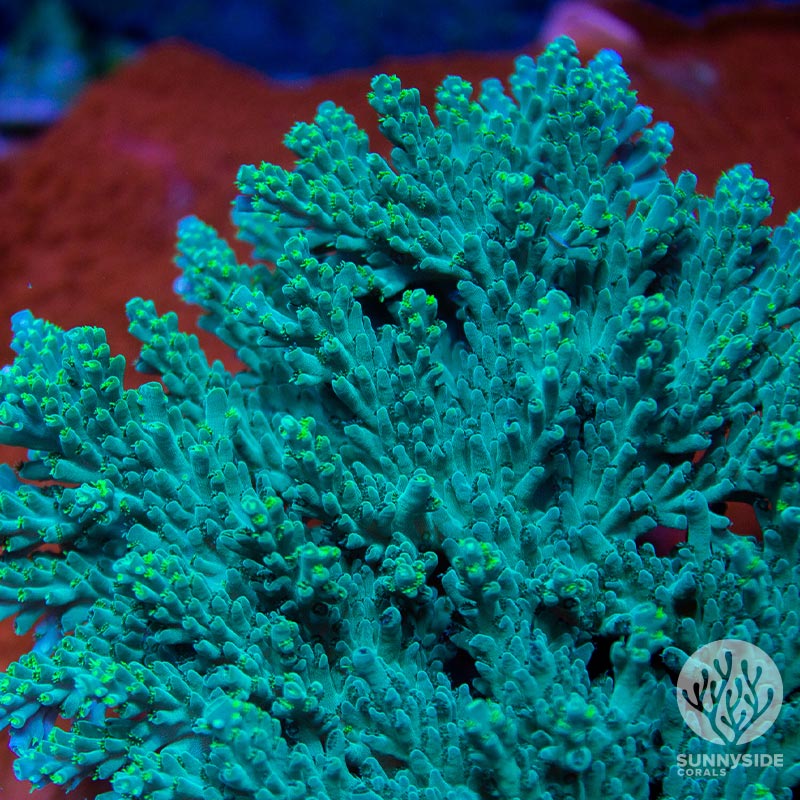
When can I add SPS to my tank?
Knowing when to add your first SPS coral to your system can be tricky. There are a lot of factors that go into knowing when your tank is ready. Here are some of the key things to consider when thinking about adding SPS corals to your own tank.
Dry Rock
If you started your tank with dry rock you will most likely have to wait close to 6 months to a year before you will be able to successfully keep anything alive. This is because dry rock can leach phosphate into the water for a very long time. Montis do best in a more established tank but are a good way to test if your tank is ready for other SPS corals such as Acropora.
Live Rock
If you started your tank with live rock that process can be dramatically shorter. However, be aware that just because your levels are where they should be, does not mean that your tank is actually ready for any corals. We recommend introducing LPS or Soft corals first with any new system. After having success with LPS and Soft coral for a while you can begin to introduce easy SPS corals like Montipora. Acros should be the last thing you try to add to your system.
Acropora are the most touchy SPS coral and in general, should not be added to a new system. We suggest waiting 6 months to a year before trying to add any Acros to your system. Frequent water changes can help to cycle and control the levels in your water. If you have access to saltwater from other tanks, you might consider doing water changes with that water to help speed up your tank.
SPS FAQs
When can I add SPS coral?
You may be able to start adding beginner SPS corals such as Montis or Birdsnest to your system within three to six months of starting your tank.
What is the easiest SPS coral to keep?
SPS corals can be hard to keep but, some of the easiest SPS corals to keep are Montipora, Stylophora, and Pocilopora. Check out our SPS Beginner packs to find a beginner-friendly SPS pack.
Are SPS corals hard to keep?
SPS generally are harder to keep than other types of corals. This is because SPS corals are highly susceptible to changes in water parameters. If your tank has a sudden dip or spike in parameters you may lose most of your SPS corals.
Difference between LPS and SPS corals
The main difference between LPS and SPS corals is the size of their polyps. Also, LPS corals are generally easier to keep than SPS corals.
Different types of SPS coral
The two most popular types of SPS corals are Montipora and Acropora.
Do you need to feed SPS corals?
SPS corals do not consume food easily as they have small polyps that make it so they cannot consume large chunks of food. We prefer to broad feed our corals by feeding our fish frozen food such as Misis shrimp and pellets.
Can SPS corals touch?
Most of the time, SPS corals can touch as long as they are the same species. For example, most Acropora can touch and often will stop growing in that direction once they start to touch.
SPS coral requirements
SPS corals require stable water parameters with low Nitrates and Phosphates. They also need substantial amounts of flow and lighting in order to obtain the best colors and growth.
Where to place SPS coral?
SPS coral require higher flow and lighting. The best place to put your SPS coral is near the top of your tank or somewhere they won’t be shaded.
How much light do SPS corals need?
SPS corals can vary on how much light they require. Acropora requires a high amount of light and often needs to sit close to the top of your tank. Montipora or Birds Nest coral require slightly less light. Check out the exact light schedule we use for our SPS Corals here.
Do SPS like high flow?
Acropora requires a high amount of flow. As stated before they often do best up high in your tank where they can receive a high amount of flow as well as light. Montipora and other SPS corals do better with slightly less flow.

